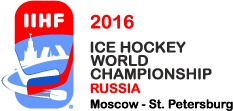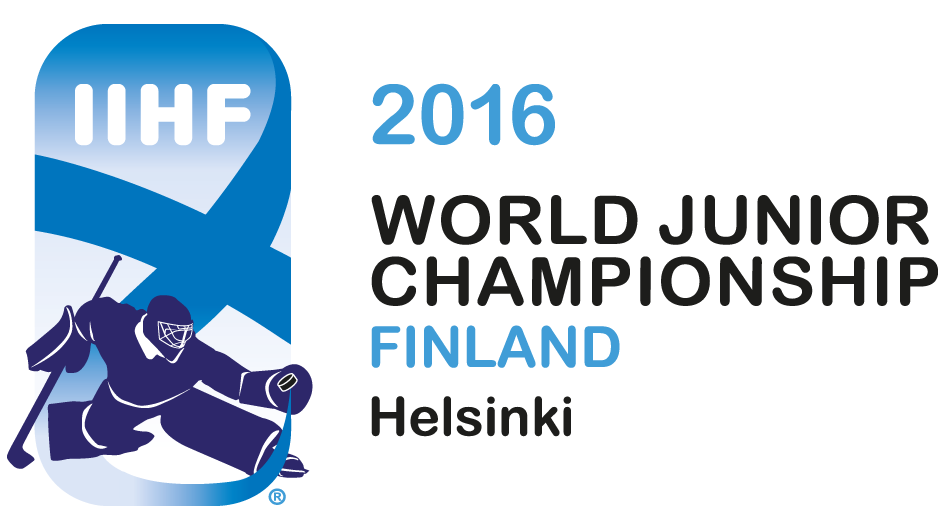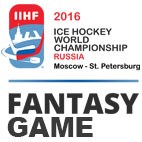Legends head for the Hall
Legends head for the Hall
IIHF introduces class of 2016

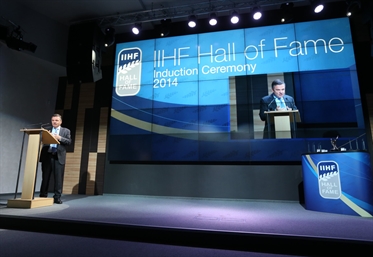 IIHF President Rene Fasel's speech during the 2014 IIHF Hall of Fame Induction Ceremony. Photo: Andre Ringuette / HHOF-IIHF Images
IIHF President Rene Fasel's speech during the 2014 IIHF Hall of Fame Induction Ceremony. Photo: Andre Ringuette / HHOF-IIHF Images
Former players Peter Bondra, Sergei Fyodorov (Fedorov), Valeri Kamenski, Ville Peltonen, and builders Pat Quinn and Ben Smith form the 2016 induction class.
Hungarian forward Gabor Ocskay is the recipient of the Richard “Bibi” Torriani Award, and Nikolai Ozerov has been given the Paul Loicq Award.
The 2016 IIHF Hall of Fame Induction Ceremony will take place in Moscow on 22 May, the final day of the 2016 IIHF Ice Hockey World Championship. The venue will be the brand new Russian and Soviet Ice Hockey Hall of Fame.
Peter Bondra
b. Lutsk, Soviet Union (Ukraine), 7 February 1968
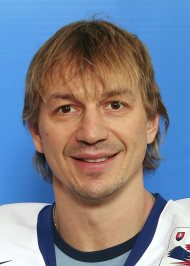
The defining moment in Slovakia’s hockey history occurred on 11 May 2002, in Gothenburg, Sweden. With exactly 100 seconds left in the third period of the Slovakia-Russia gold-medal game, Peter Bondra rifled a shot under the blocking arm of Maxim Sokolov, his second goal of the game, to give Slovakia a 4-3 win over Russia and its first ever gold medal.
It immediately became to Slovak sports what Paul Henderson’s goal was to Canada or Mike Eruzione’s goal to the United States.
That Bondra scored the historic goal was fitting. He had played in the 1994 Olympic Qualification in September 1993, leading his newly-formed nation to victory and ensuring the country played at the Lillehammer Olympics. Bondra did not appear in that event, however, because he was playing with the Washington Capitals midway through his fourth NHL season.
His first top-level international tournament was the 1996 World Cup of Hockey. Playing alongside Miroslav Satan, Pavol Demitra and Ziggy Palffy, Bondra scored three times in as many games, but the team finished a disappointing seventh. Two years later, he was in the lineup for the first Olympics with NHL participation, in Nagano, but again the team finished out of the picture.
In 2002, Slovakia was beset by bad luck at the Olympics in Salt Lake because the nation’s top players couldn’t gain their release from NHL teams in time for critical games. Bondra didn’t even play, while other top players were shuffled in and out of the lineup. The team finished 13th, but everyone knew this was a much more talented team than the placing indicated.
Three months after Salt Lake, Slovakia coach Jan Filc was able to assemble a dream team for his country. In the preliminary round robin, the Slovaks won two games and lost a 3-1 decision to Finland. In the next round, they won all three games, including key victories over Sweden, 2-1, and Russia, 6-4 (in which Bondra had two goals and an assist). This qualified the team for the playoffs.
In the quarter-finals, Bondra was the hero against Canada. Trailing 2-0 late in the second period, Bondra scored at 19:59 to give his team life heading to the third. Satan tied the game early in the final period, and Bondra scored the game winner less than a minute later to eliminate the Olympic gold medallists.
In the semi-finals, against Tre Kronor, Slovakia won in a shootout, sending the team to the gold-medal game against Russia. Bondra scored one of two Slovak goals early in that final game, but the Russians rallied to tie the score, 3-3, midway through the third. That set the stage for Bondra’s goal of the century for Slovakia.
A year later, he helped Slovakia win bronze at the World Championship, and he also played at the 2006 Olympics.
Equally impressive was Bondra’s NHL career. Arguably the greatest Slovak to play in the league after Peter Stastny, Bondra had a career in which he eclipsed the vaunted 500-goal plateau and 1,000-game mark. After 16 years, 13 of which came with Washington, he retired in 2007 at age 39, his reputation solidified in both international and NHL circles.
Sergei Fyodorov
b. Pskov, Soviet Union (Russia), 13 December 1969
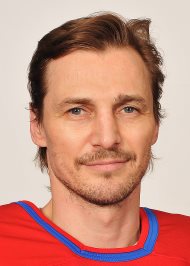
In part because of circumstance, in part because he was so dominant in North America, one tends to think of Sergei Fyodorov first as an NHL player and only second as a Russian international star. Yet, despite defecting from the Soviet Union after a brilliant junior career, Fyodorov played in nine top-level tournaments for his country, winning gold at the World Championship three times.
The 1989 World Junior Championship in Alaska was best remembered for the play of the Pavel Bure-Sergei Fyodorov-Alexander Mogilny line. The threesome led the tournament in scoring and earned a gold medal for the Soviet Union, giving every indication that the next generation of Soviet hockey was going to be as dominant as the last.
In both 1989 and 1990, Fyodorov continued to improve, helping CCCP to gold at the senior World Championship, but soon afterwards he made a brave decision. Having been drafted by the Detroit Red Wings in 1989, he knew an NHL career was within his grasp, so at the Goodwill Games in Portland in July 1990, he defected, joining the NHL and forgoing a career in the Soviet Union.
It was a decision that served the hockey player well. Wearing number 91, the reverse digits of his idol, Detroit captain Steve Yzerman, Fyodorov developed into a singular talent. A remarkable skater, he was sensational one-on-one, had a great shot, and was as good defensively as he was offensively.
As an NHL rookie, Fyodorov had 31 goals and 79 points in 77 games, proving even at age 21 that he belonged in the league. He improved in goals and points in each of his first four years, peaking in 1993-94 when he had 56 goals and 120 points. At the end of the year, Fyodorov won the Hart Trophy and Lester B. Pearson Award, both honours acknowledging his place as the best player in the league. Incredibly, he also won the Frank Selke Award as the top defensive forward, a combination no player before or since has won.
As good as 1993-94 was for Fyodorov personally, the 1996/97 season was even better. He represented Russia at the 1996 World Cup of Hockey in September, and although the team finished a disappointing fourth, he was among the best players in the event. At season’s end, he helped the Red Wings win their first Stanley Cup since 1955. The team included coach Scotty Bowman’s “Russian Five”, which consisted of forwards Fyodorov, Igor Larionov, and Slava Kozlov, and defencemen Slava Fetisov and Vladimir Konstantinov.
The Red Wings repeated as Cup champs in 1998, and although Fyodorov missed much of the regular season because of a contract dispute,he came back in time for the playoffs and led all players with ten goals in 20 post-season games. It was during that season that he also played an important role in Russia’s silver medal at the 1998 Olympics in Japan.
Fyodorov won a third Cup with Detroit in 2002, a season in which he was on Russia’s bronze-medal team in Salt Lake. He earned his third World Championship gold in Quebec City in 2008, making the pass to goal scorer Ilya Kovalchuk in overtime to give Russia a 5-4 win over host Canada in the 100th anniversary season of the IIHF and ending a 15-year drought without gold.
In 2015, Fyodorov was inducted into the Hockey Hall of Fame in Toronto after finishing his NHL career with 1,179 points in 1,248 regular-season games.
Valeri Kamenski
b. Voskresensk, Soviet Union (Russia), 18 April 1966
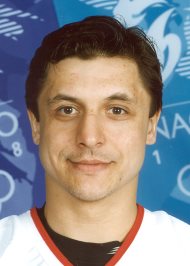
By the time Triple Gold Club member Valeri Kamenski made his NHL debut with the Quebec Nordiques late in the 1991/92 season, his place in international hockey had already been well established. He had played in two World Junior Championships, winning a silver medal in 1985 and a gold in 1986. He also won gold at the World Championship three times, starting in 1986, just four days after his 20th birthday, a silver in 1987, gold again in 1989 and 1990, and a bronze in 1991.
As well, Kamenski claimed Olympic gold in 1988 in Calgary, the last time the old Soviet Union competed at the quadrennial event. He was drafted 129th overall by the Nordiques in 1988, even though the team knew full well one that of the country’s top young talents was not going to be allowed to leave the Communist Soviet Union.
To NHL fans, Kamenski first burst onto the scene a year earlier, during Rendez-vous ’87 in Quebec City. He scored twice and added an assist in the second of the two-game series, a 5-3 win which gave the Soviets a split in the memorable showdown. While Wayne Gretzky was named MVP for Team Canada, Kamenski was named the top Soviet player. He was still only 20 years old.
Just a few months later he was again front and centre at the 1987 Canada Cup. It was his goal with just 64 seconds left in the third period of game two that sent the game into overtime.
It took time, but the Nordiques negotiated successfully to get him into the NHL before the end of the 1991/92 season. Bad luck dogged him, though, and he broke his leg, thumb, and ankle during his first two seasons. In all, he played just 55 games and scored 22 goals during that time.
It wasn’t until 1993/94 that Nordiques fans had a true chance to see what Kamenski could do. That year, he scored 28 goals and showed flashes of genius with the puck for which he was famous.
The team moved to Colorado for the start of the ’95/‘96 season, by which time he had become an experienced NHL player. Healthy for the full season, Kamenski scored 38 goals and 85 points. He played all but one game in the season, and in the playoffs he was dominant, the team’s best player after goalie Patrick Roy and captain and Conn Smythe Trophy winner Joe Sakic.
The Avalanche swept the Florida Panthers in four games to win the franchise’s first Cup, and with the win Kamenski became only the fourth member of the Triple Gold Club.
In 1997, Kamenski scored a jaw-dropping goal. Playing for Colorado against Florida, he curled to the net as Avs teammate Alexei Gusarov brought the puck in over the blue line. Gusarov waited until Kamenski was in front of the goal and made a pass. Kamenski got the puck off balance, and as he spun in the air he back-handed the puck between the goalie’s pads. No more skillful goal has been captured on film.
Ville Peltonen
b. Vantaa, Finland, 24 May 1973
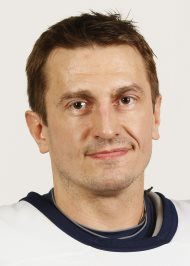
Four Olympics, 13 World Championships, two World Cups, and 22 years of professional hockey are the impressive markers in the career of Ville Peltonen.
But like Peter Bondra of Slovakia, Peltonen is best remembered for achieving history at the World Championship. In the 1995 gold-medal game in Stockholm, the 21-year-old Finn scored three goals to give his country its first WM gold with a 4-1 victory over the favoured Tre Kronor.
Peltonen played on a line that year with Jere Lehtinen and Saku Koivu, the three claiming all spots among forwards at the tournament all-star team. The linemates had first played together at Peltonen’s inaugural senior appearance for Suomi, at the 1994 Olympics in Lillehammer. Finland won bronze that year, and a tradition was born. If Peltonen was in the lineup, Finland had a great chance of winning a medal.
Indeed, over an international career that spanned some 16 years, Peltonen played in 19 top-level events and won 13 medals, an unprecedented number among Finnish players. He came precariously close to winning a gold a year earlier, but Canada prevailed 2-1 in the penalty-shot shootout to win the 1994 Worlds, giving Finland silver.
A top player ever since he put on skates, Peltonen joined the HIFK Helsinki system at the age of ten and started his pro career in the top league in 1991 at age 18, always hoping to follow in the footsteps of his idol and hero, Jari Kurri. Despite being drafted by San Jose in 1993, Peltonen remained with HIFK until 1995, deciding to try the NHL only at that point. Over much of the next two decades, he moved seamlessly between North America and Europe, his skill and reputation giving him a flexibility few players could hope to enjoy.
During his first two years in North America, Peltonen played more in the minors than NHL and decided to relocate to Sweden in 1997/98. He returned to the NHL a year later with renewed confidence and developed into a solid player with Nashville before returning to Europe again. His last NHL stint was with Florida (2006-09), but he ended his career with three years in HIFK, where it all began.
In all, Peltonen played in Finland, Sweden, Switzerland and Belarus (in the KHL), often captaining his team, often leading it in scoring. The left winger wore the “C” for his country at six World Championships – 1998, 2000, 2005, 2006, 2007, 2008 – more than any other player in Finnish history. His father, Esa, was inducted into the IIHF Hall of Fame in 2007, making this the second father-son team in IIHF history after Kalevi (father) and Teppo Numminen.
Pat Quinn
b. Hamilton, Ontario, Canada, 29 January 1943
d. Vancouver, British Columbia, Canada, 23 November 2014
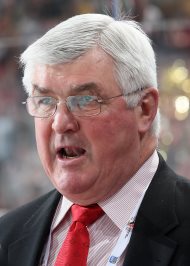
His size and intimidating demeanour behind the bench was something of a false front for a man who was generous and affable away from the spotlight of coaching. Indeed, Pat Quinn was a legend among the players he coached and the athletes he talked to, his “bench” at the Vancouver Olympics in the athletes village as important as any decision he made during the gold-medal game on the final day.
Quite simply, no coach in IIHF history won gold in as many events or won medals in as many events as the big Irishman. Quinn won gold at the U18 and U20 tournaments where patience and nurturing are the ways to success, and he won gold at the Olympics and World Cup, where a firmer disposition for the world’s best players is essential to success. His bronze at the 1986 World Championship means he is the only coach to have won at an incredible five levels of play.
Pat Quinn came by his success naturally. As a player, he was a big, burly defenceman. He won the Memorial Cup in 1963 with the Edmonton Oil Kings and later made it to the NHL, playing 606 games with Toronto, Vancouver, and Atlanta, before retiring in 1977.
He moved quickly up the coaching ranks, joining Philadelphia in 1977/78 as an assistant and later in the season as the head coach of the Flyers. It was under his leadership that the Flyers went on a record-setting 35-game unbeaten streak in 1979/80.
Over the course of 20 years behind the bench, Quinn never won a Stanley Cup, but he was twice named coach of the year (1980 and 1992). He took the Flyers to the Cup finals in 1980 and the Vancouver Canucks as far in 1994, losing the latter in game seven to the New York Rangers.
It was while coaching the Los Angeles Kings that he got his first chance at the international level. When the Kings finished well out of the playoffs in 1985/86, he was asked to coach Canada’s World Championship entry, a team that included Marcel Dionne, Dale Hawerchuk and Denis Potvin.
That third-place finish was Quinn’s first and last appearance with Canada for 16 years, but his coaching career and reputation vaulted again while with the Toronto Maple Leafs (1998-2006). It was in Salt Lake that Quinn became famous for enjoying a late-night cigar on the same bench every night in the athletes village where men and women from various sports and various countries chatted with him and listened to his experiences and his informal advice. Quinn led Canada to gold that year, the nation’s first top-of-the-podium finish in half a century, and he replicated those efforts two years later at the World Cup of Hockey.
Although the Turin Olympics were disappointing for Canada, Quinn happily accepted the challenge to coach the nation’s U18 entry in 2008. Despite having no junior experience, he guided the teens to gold. One year later, he did the same at the World Junior Championship.
Quinn passed away a young 71, but his legacy lives on in his achievements behind the bench with those players he coached and his influence on many more athletes away from the ice. His personality, his hockey smarts, and his competitive spirit make him one of the legends of the coaching fraternity.
Ben Smith
b. Gloucester, Massachusetts, United States, 21 January 1946

The son of a U.S. Senator, Ben Smith III was a fine hockey player in his own right, playing three years of college hockey at Harvard under Cooney Weiland, a Hall of Famer from his days with the Boston Bruins, before embarking on a coaching career that would endure until his retirement.
Smith graduated in 1968 and wasted no time making the transition from player to coach. Just a few months after attending his final class he was hired as an assistant at the University of Massachusetts-Amherst and also coached a local high-school team in his hometown in Gloucester, a small fishing town.
Smith’s first full-time head coaching job was at Yale, but after five rewarding years he left to take an assistant position under Jack Parker at Boston University. Smith stayed with BU for nine years, including a championship 1989/90 season, and he later made his way around top schools, coaching at Dartmouth for a year and Northeastern for five in the 1980s and into the 1990s.
His first international opportunity came when he took a year off to work as an assistant coach for the U.S. men’s team for the 1988 Olympics in Calgary.
In 1996, Smith gave up men’s hockey and college hockey to coach the women’s national team, becoming the first full-time coach employed by USA Hockey. Over the course of the next ten years he experienced the highs and lows in a game in which the Canada-United States rivalry produced tears of both joy and disappointment.
Canada won the 1997 Women’s World Championship, its fourth straight title at the expense of the Americans, and it was Canada that was favoured to win gold heading into the first Olympics with women’s hockey. But Nagano in 1998 proved to be Smith’s crowning glory as the Americans stunned Canada twice in three days.
First, Smith’s team scored an unprecedented six goals in the third period to win the final game of the round robin, 7-4, and three days later the team played a flawless game, winning 3-1 against their northern rivals and claiming the historic gold.
Canada continued to dominate the Women’s Worlds, however, confounding Smith in 1999, 2000, 2001, and 2004. As well, Canada turned the tables on the Americans at the 2002 Olympics, winning gold in stunning fashion. In 2005, however, the U.S. played a perfect gold-medal game, beating Canada 1-0 in a shootout for its first ever Women’s World Championship gold medal. Smith ended his career a year later after a bronze at the 2006 Olympics in Turin.
Smith’s greatest assets as a coach were his ability to teach the game with x’s and o’s but also to adopt the right temperament for the women’s game. He often spoke in riddles, and he was never one to scream and shout to motivate. Instead, his ability to handle different personalities was a skill few coaches possess.
Richard “Bibi” Torriani Award
Gabor Ocskay
b. Budapest, Hungary, 11 September 1975
d. Budapest, Hungary, 24 March 2009
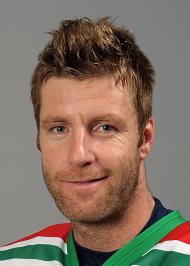
Few players have had success in both domestic league and international play to the extent of Hungarian Gabor Ocskay. At the national level, he spent his entire career with the Alba Volan Szekesfehervar team in the domestic league, leading the team to nine championships in his 16 seasons (1993-2009).
Internationally, Ocskay was equally successful. He started representing his country as a 17-year-old, playing in both the U20 World Championship C-Pool and senior World Championship C-Pool. He went on to play in 16 straight World Championships between 1993 and 2008, notably in 1998 and 2000 when the team won the C-Pool to earn promotion to B-Pool.
The nation’s finest moment came in 2008, however, when it beat top-seeded Ukraine, 4-2, on the final day of the World Championship Division I Group B in Sapporo, Japan, to earn Ocskay and his teammates promotion to the top division for the first time in 70 years.
This incredible achievement was diminished by Ocskay’s untimely death. He had missed much of 2004 with heart trouble, but he appeared to have made a full recovery. However, just two days after helping Alba Volan win its seventh straight league title in March 2009, Ocskay suffered a fatal heart attack.
Six weeks later, the Hungarian national team travelled to Switzerland for the World Championship, thrilled by the historic achievement but heavy-hearted because their great number 19 was not there with them.
While his untimely death stunned the Hungarian hockey world, Ocskay had long ago established himself as an influential athlete in his homeland. His father had also played internationally, but the younger Gabor was adored by fans and respected by opponents. In all, he played 187 games for Hungary and was named player of the year three times in the domestic league.
Paul Loicq Award
Nikolai Ozerov
b. Moscow, Russia, 11 December 1922
d. Moscow, Russia, 2 June 1997
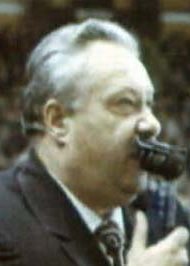
Although he was a national tennis champion many times over and a film and stage actor of great esteem, Nikolai Ozerov is best remembered as the sports voice of a nation for decades in the post-war Soviet Union.
From the time of his first broadcast, on 29 August 1950, until his death in 1997 at age 74, his was a voice that brought the most exciting hockey and football games to millions of households across the country, first in radio and quickly in television when that medium was introduced.
As a young man, Ozerov developed into a first-rate tennis player while working with the Moscow Art Theatre. He later appeared in several movies, always playing the part of a sports commentator. “Isn’t it wonderful, to bring people joy?” he once enthused rhetorically about his two great passions.
That passion was central to his popularity. He engaged the viewer with precise observation, and as the action reached a climax, so, too, did his voice. He covered some 30 World Championships in hockey and all Super Series in the 1970s and 1980s when Soviet teams toured the NHL with much fanfare (and success).
Additionally, Ozerov covered 17 Olympics (Summer and Winter) and eight FIFA World Cup tournaments.
Later in life, when he was much revered, he established an informal club with young journalists, exchanging thoughts, sharing experiences, and providing guidance to a new generation of sports enthusiasts.
And, of course, there were the honours. His longevity and popularity ensured he was formally recognized many times over. These included some 15 medals in the Soviet Union and, perhaps most importantly, the Silver Olympic Medal in 1992, the highest honour the IOC can bestow on a person.
Back to Overview

